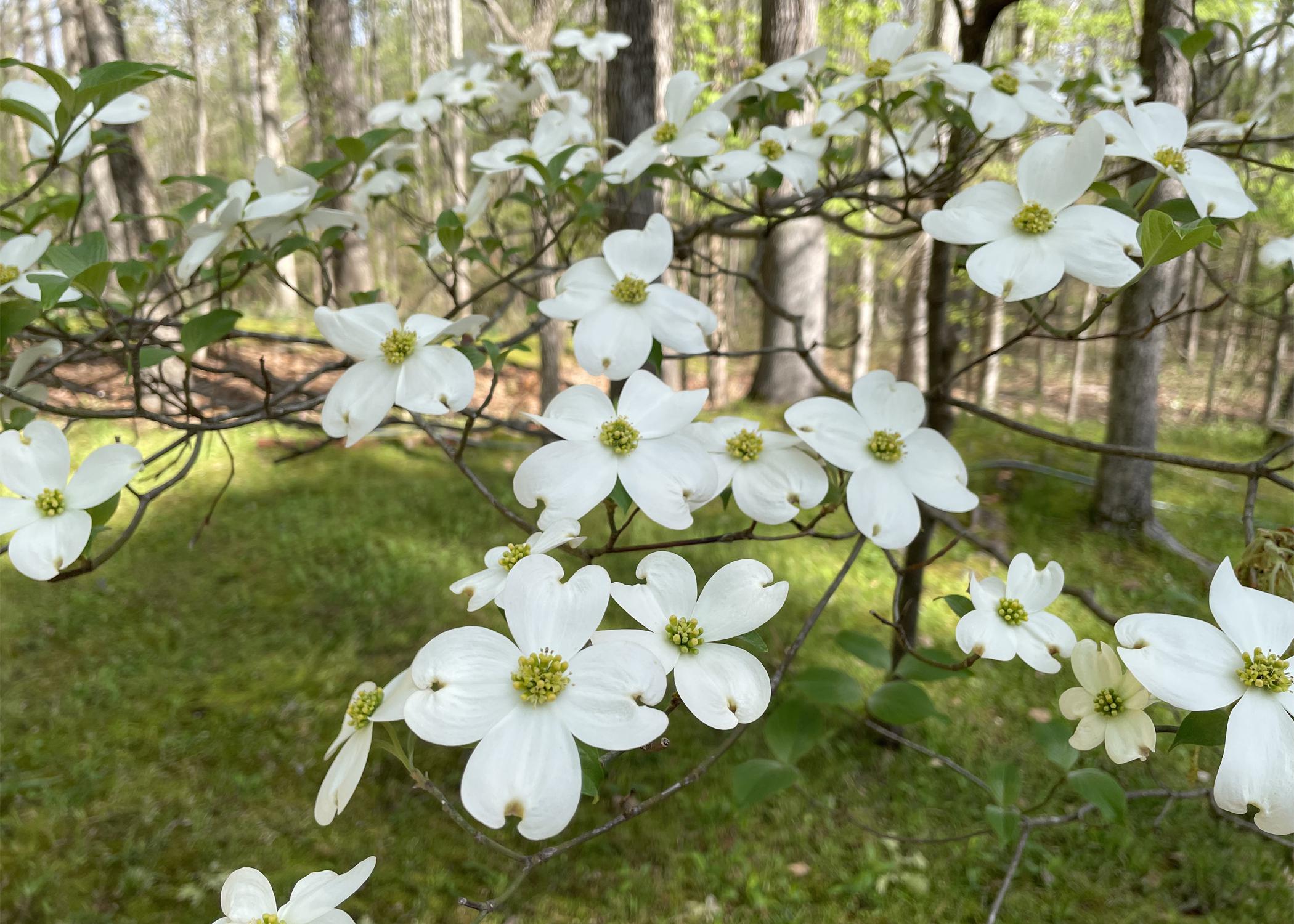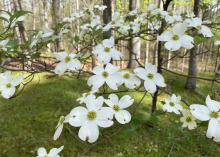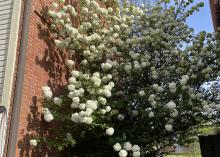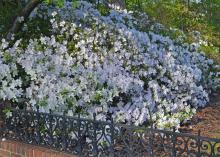White flowers in spring steal the landscape show
While in Grenada, Mississippi, speaking at the Garden Clubs of Mississippi’s 26th Annual Convention, I couldn’t help but notice the gorgeous white-blooming plants that graced the town’s gardens, parks and neighborhoods.
One of my favorites is the native flowering dogwood, and it is one that I do not see as often anymore in south Mississippi. This plant, known scientifically as Cornus florida, is a cherished understory tree throughout the South with blooms that are truly iconic.
Unfortunately, these beloved trees have faced a serious decline in recent decades due to the spread of a fungal disease known as dogwood anthracnose. This disease thrives in cool, moist environments and causes leaf spots, stem cankers and dieback, eventually killing affected trees if left untreated.
Disease-resistant cultivars are available, and gardeners can choose these when setting out new dogwoods. They can also help protect existing specimens by avoiding overhead watering and ensuring good airflow and proper spacing.
Despite the challenges, when given the right conditions and care, flowering dogwoods remain one of the most graceful and rewarding trees for Southern landscapes.
Dogwoods have what appear to be large, four-petaled white flowers that are actually bracts -- modified leaves. These frame a tight cluster of tiny, yellow-green true flowers in the center.
The bracts are often pure white, but some trees may blush ever so slightly with soft pink tinges near the tips. Their gently notched ends give them a cross-like appearance, and when they blanket the tree’s horizontal branching structure, the effect is almost ethereal.
Dogwoods bloom in early spring, usually before the leaves emerge, making the blossoms even more striking against the bare branches and forest floor.
Equally eye-catching in Grenada were the white-flowering evergreen azaleas -- classic Southern staples that thrive in the filtered light beneath tall pines and hardwoods. These azaleas are members of the Rhododendron genus and maintain their lush, dark green foliage all year long.
Azaleas provide structure and beauty to the landscape, even when not in bloom. In early spring, they burst into flower with trumpet-shaped blooms that often have delicate, ruffled edges and a gentle fragrance.
Some cultivars have pure white petals that look like fine porcelain, while others may show faint greenish throats or hints of blush pink that add depth and elegance. When massed in the landscape, their blooms seem to float above the foliage like soft clouds.
And just when you think their performance is over, some varieties surprise you with a smaller encore bloom in fall.
For areas basking in full sun, the Snowball Viburnum, often referred to as Chinese Snowball, made an unforgettable impression in Grenada.
This bold, deciduous shrub puts on a dramatic show each spring with massive, globe-shaped flower clusters that can be as large as softballs and sometimes reach up to 8 inches in diameter. Each “snowball” is made up of dozens of small, star-shaped florets packed tightly together, creating a rounded, hydrangea-like appearance.
The flowers start out a soft, chartreuse green and slowly mature to a dazzling white, giving the shrub an evolving display of color and texture as the season progresses. When in full bloom, the branches arch slightly under the weight of the blossoms, creating a cascading effect that’s nothing short of breathtaking.
There’s something timeless and graceful about white flowers in the landscape. They light up shady corners, provide contrast against darker foliage, and bring a sense of peace and refinement to a setting. My time in Grenada reminded me of how powerful and uplifting these blooms can be, and how they quietly steal the show when spring rolls around.






